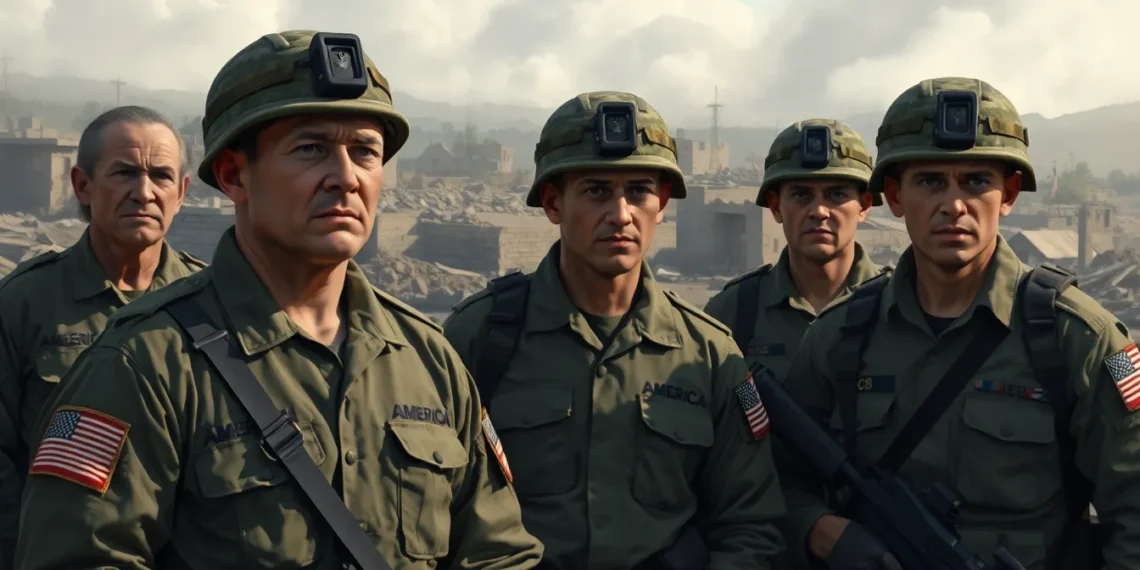War isn’t just about battles and strategies; it’s a messy cocktail of heartbreak and chaos that leaves a mark on humanity. While politicians debate in plush offices, the real costs unfold on the ground, where lives are shattered and communities are torn apart. The human cost of war isn’t just a statistic; it’s a profound loss that echoes through generations.
Imagine a world where instead of soldiers, we send in peacekeepers wielding hugs and kindness. Unfortunately, that’s not the reality. As the dust settles, it’s the families, the children, and the innocent bystanders who bear the brunt of conflict. This article dives into the often-overlooked toll of war, exploring the emotional scars and societal impacts that linger long after the last shot is fired. Buckle up for a journey through the human experience that war tries so hard to erase.
Understanding The Human Cost Of War
The human cost of war encompasses significant emotional, physical, and societal repercussions. This cost often gets overlooked in discussions focused on military strategy and geopolitical implications.
Definition And Scope
The human cost of war refers to the toll that conflict takes on individuals and communities. It includes casualties, injuries, psychological trauma, and loss of livelihood. Estimates indicate that civilian casualties can be as high as 90% in certain conflicts, highlighting the disproportionate impact on non-combatants. Displacement also plays a critical role; millions of individuals and families are forced to flee their homes due to violence. Additionally, societal impacts manifest through long-lasting economic challenges, broken families, and diminished social cohesion.
Historical Perspectives
Historical examples illustrate the human cost of war throughout different eras. World War I left approximately 16 million dead and caused widespread physical and psychological trauma. The Vietnam War saw over 3 million Vietnamese casualties, along with extensive damage to infrastructure. More recent conflicts, such as those in Syria and Yemen, resulted in staggering civilian deaths and millions displaced. These events reveal a pattern where innocent lives remain shattered long after the combatants cease fighting. Studying these incidents fosters awareness of the enduring consequences of warfare on humanity.
Physical And Psychological Impact
Warfare inflicts severe physical and psychological damage on those directly and indirectly involved. Understanding these impacts reveals the profound human cost of conflict.
Injuries And Disabilities
Injuries and disabilities arise frequently in war settings. Combatants and civilians suffer from gunshot wounds, shrapnel injuries, and explosive remnants. Estimates indicate that many survivors face life-altering disabilities, dramatically affecting their quality of life. Access to medical care varies, and countless individuals endure prolonged suffering. Rehabilitation services are often limited or nonexistent in conflict zones. Facilities that address these needs struggle to accommodate the influx of casualties. In addition, the burden on healthcare systems intensifies during and after conflicts, complicating recovery for thousands.
Mental Health Consequences
Mental health consequences manifest across affected populations. Individuals commonly experience post-traumatic stress disorder, anxiety, and depression due to the horrors of war. Research shows that up to 30% of veterans and countless civilians exhibit signs of psychological distress after conflicts. Symptoms can range from flashbacks to emotional numbness, impacting daily functioning. For many, inadequate mental health support exacerbates their struggles. Cultural stigmas may also prevent individuals from seeking help. Education on trauma and available resources plays a crucial role in recovery and healing processes. Timely interventions can significantly improve life quality for those affected by war-related psychological trauma.
Economic Burden Of War
War imposes significant economic burdens on societies, affecting both direct costs and long-term financial stability.
Loss Of Workforce
Conflict severely diminishes the workforce. Many individuals lose their lives, while others suffer crippling injuries, rendering them incapable of employment. Estimates suggest civilian casualties can comprise up to 90% of losses in various wars. Economic productivity declines as families struggle to replace lost income, and communities face skill shortages. Furthermore, a diminished workforce leads to decreased economic growth, leaving nations in difficult financial positions. The repercussions extend beyond immediate casualties, as long term labor market disruptions persist, hampering recovery efforts.
Cost Of Rehabilitation
Rehabilitation costs escalate after wars conclude. Survivors often require extensive medical assistance, physical therapy, and psychological support. Financial resources become strained due to increased demand for healthcare services and facilities, which may already be overwhelmed by conflict’s direct consequences. Research indicates that between 10% and 30% of veterans experience significant mental health issues, necessitating ongoing treatment. In addition, educational programs to assist in skill development face substantial funding challenges. Societal reintegration of affected individuals demands consistent investments in rehabilitation programs, complicating economic recovery for affected nations.
Displacement And Refugee Crisis
Displacement caused by war presents severe challenges for millions globally. Forced migration affects individuals and families, placing them in precarious living situations and often uprooting their lives.
Impact On Families
Families face significant emotional and financial turmoil due to displacement. The interruption of education affects children, with many unable to attend school. Stress and anxiety become pervasive as families navigate new environments, often with limited resources. Reports indicate that approximately 80 million people worldwide are currently displaced by conflict, highlighting the scale of this crisis. Parenting becomes particularly difficult in refugee camps, where safety, food, and medical care are minimal. These strained conditions compromise family unity and mental health, creating long-lasting scars.
Long-term Consequences
Long-term consequences of war-induced displacement continue to unfold for generations. Children grow up without stable homes, leading to cycles of poverty and vulnerability. Access to healthcare diminishes, resulting in a lack of essential services for displaced populations. As many as 60% of refugee children experience severe emotional distress, making it challenging to adapt to new circumstances. Economic opportunities stagnate, leaving adults without jobs or skills that meet market demands. Unresolved trauma often persists even after families resettle, as the impact of war lingers within communities.
The Role Of Humanitarian Organizations
Humanitarian organizations play a crucial role in addressing the human cost of war. They focus on providing essential support to affected individuals and communities devastated by conflict.
Providing Aid And Support
Humanitarian organizations deliver vital supplies like food, water, and medical care to war-torn areas. They operate in dangerous conditions, ensuring that those impacted by conflict receive necessary assistance. Organizations such as the International Red Cross and Doctors Without Borders offer healthcare in areas with limited access. They also provide shelter and psychosocial support, helping families cope with trauma. Numerous initiatives focus specifically on children, ensuring they receive education and emotional care despite instability. Many trapped in conflict zones rely heavily on these organizations for survival and sustenance.
Recovery And Rehabilitation Efforts
Rehabilitation efforts led by humanitarian groups address physical and mental health needs of survivors. Many offer physical therapy and counseling services to help individuals regain their functionality and cope with psychological distress. Programs often incorporate community-based approaches, fostering social reintegration to rebuild lives. Training and employment initiatives support economic recovery, empowering individuals to regain independence. By emphasizing the importance of mental health resources, organizations work to alleviate the stigma surrounding psychological trauma. The long-term commitment of humanitarian organizations paves the way for resilience and recovery in war-affected communities.
A Profound Tragedy
The human cost of war is a profound tragedy that extends far beyond the battlefield. It encompasses emotional scars physical injuries and societal upheaval that ripple through generations. Innocent victims often bear the heaviest burdens facing loss displacement and trauma that can last a lifetime.
Understanding these costs is crucial for fostering compassion and advocating for peace. The efforts of humanitarian organizations play a vital role in alleviating suffering and rebuilding lives but the path to recovery remains long and complex.
By recognizing the true impact of conflict on individuals and communities society can work towards a future where the horrors of war are replaced by healing and hope.







